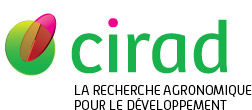Hussain Sajjad, Luro François, Costantino Gilles, Ollitrault Patrick, Morillon Raphaël. 2012. Physiological analysis of salt stress behaviour of citrus species and genera: Low chloride accumulation as an indicator of salt tolerance. South African Journal of Botany, 81 : 103-112.
|
Version publiée
- Anglais
Accès réservé aux personnels Cirad Utilisation soumise à autorisation de l'auteur ou du Cirad. document_564982.pdf Télécharger (826kB) |
Quartile : Q2, Sujet : PLANT SCIENCES
Résumé : Tolerant citrus rootstocks are defined as Cl? excluders. However, little is known about the salt tolerance of cultivars used as scions, particularly the tolerance of monoembryonic citrus genotypes. To enhance the genetic resources for generating improved hybrid rootstocks, the evaluation of large samples of citrus species, including both monoembryonic and polyembryonic genotypes, is necessary. In this study, 12 citrus genotypes representing the major Citrus species and all the three genera of the Rutaceae family were subjected to moderate salt stress (75 mM) for 12 weeks to characterise their physiological response to salt stress. Various symptoms and physiological parameters were evaluated to characterise their salt sensitivity. These included plant growth (stem diameter), leaf chlorophyll content, leaf flavonoid content, maximum quantum yield of PSII [(Fm ? F0) / Fm)], net photosynthesis, stomatal conductance and leaf Na+ and Cl? contents. The results clearly demonstrated that the most salt sensitive genotypes accumulated high concentrations of Na+ and Cl? and maintained a fair growth and photosynthetic rate. By contrast, salt-tolerant genotypes accumulated less Na+ and Cl? and decreased their growth and gas exchange. Poncire commun citron and Marumi kumquat were the most sensitive species, while mandarins, pummelo and Australian sour orange were the most tolerant species. Among the genotypes, Engedi pummelo presented a specific trait for salt tolerance that has not been previously reported. Taken together, the results suggest that low leaf chloride content can be used as an indicator of salt stress tolerance in citrus genotypes. Exploitation of this indicator will enable the improved evaluation of citrus genetic resources and should lead to the identification of new sources of tolerance for rootstock breeding.
Mots-clés Agrovoc : Citrus, stress osmotique, porte greffe, tolérance au sel, chlorure, feuille, indicateur biologique, génotype, physiologie végétale, mécanisme de défense cellulaire, taux de croissance, photosynthèse, Rutaceae
Mots-clés géographiques Agrovoc : France
Classification Agris : F62 - Physiologie végétale - Croissance et développement
H50 - Troubles divers des plantes
F30 - Génétique et amélioration des plantes
Champ stratégique Cirad : Axe 1 (2005-2013) - Intensification écologique
Auteurs et affiliations
- Hussain Sajjad, INRA (FRA)
- Luro François, INRA (FRA)
- Costantino Gilles, INRA (FRA)
-
Ollitrault Patrick, CIRAD-BIOS-UMR AGAP (ESP)
 ORCID: 0000-0002-9456-5517
ORCID: 0000-0002-9456-5517
- Morillon Raphaël, CIRAD-BIOS-UMR AGAP (ESP)
Autres liens de la publication
Source : Cirad - Agritrop (https://agritrop.cirad.fr/564982/)
[ Page générée et mise en cache le 2025-04-24 ]




